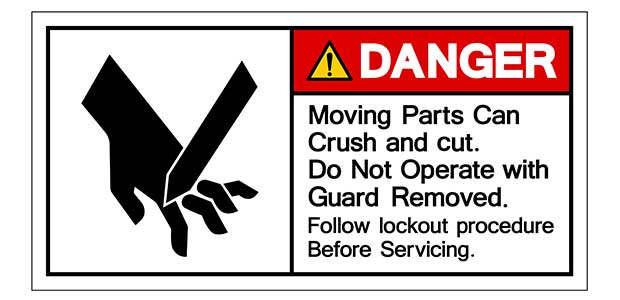
Machine Guarding Best Practices
Determining which best practices your organization can manage will determine skillset gaps and outside support selection criteria.
- By Joseph P. Gasparino Jr., Steve Misuraca
- Mar 01, 2022
Machine guarding is in the OSHA Top 10 Most Frequently Cited Violations each year. Perhaps your organization had a significant machine injury. Maybe you have machine guarding risk concerns at your site(s), or you simply feel your organization’s culture needs to move towards engineered solutions on the OSHA Hierarchy of Controls. Where do you start? We have compiled machine guarding best practices into three categories: Data Gathering, Assessments and Solutions.
Data Gathering
Data gathering is important as it sets the tone for the entire machine guarding assessment process. Most organizations defer to their Computerized Maintenance Management System (CMMS) for a detailed machine asset list. A CMMS is a software package that maintains a computer database of information about an organization's maintenance assets, including a detailed machinery list. It is recommended to do a validity check and make sure that all obsolete equipment is removed, and newer equipment is on the list. It would also be recommended that the list includes the asset name, asset number, description and location as these would assist in work scope execution.
For those that are managing multiple sites, there will be additional steps to the process. Locations could vary in size and not have a CMMS system; in which, you may need to defer to the accounting asset list. For each location, it is recommended that the location name, location point of contact (as well as their contact information), city, state, country, number of buildings, number of assets and approximate square footage of the facility be noted.
Now that the data is gathered, you should determine the expected work scope and output of this initiative. Do you need a risk assessment? Would you like a guarding inventory? Will the assessment be per OSHA or ANSI standard? Do you want to capture best practices during the process? Once these considerations are clear, you will need to determine if this is an internal initiative or if external support is required.
To determine if this can be executed with internal labor, it would be important to calculate the expected workload in hours. Based on our experience, you can assess approximately 25 machines per day in a manual assessment process, which will then take approximately 10 days to organize notes and images into a usable standardized reporting format.
Internal Labor Calculation (ILC):
This article originally appeared in the March 1, 2022 issue of Occupational Health & Safety.